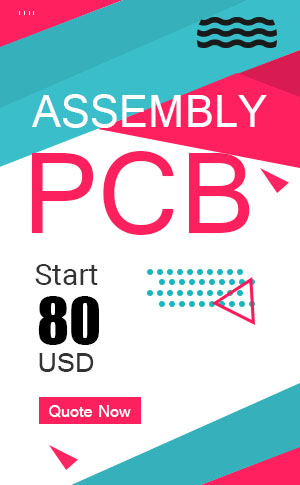General, quoting & support.
Add: Building E, No.58, Nanchang Road, Xixiang , Baoan District Shenzhen City, Guangdong, China
Tel : 0755-27348887
Fax : 0755-27349876
E-mail : svc@pcbastore.com
-
Why Through-Hole PCB Assembly Manufacturers Are Still Essential in Modern Electronics
Through-hole PCB assembly provides strong, durable, and high-voltage capable boards; PCBA Store, a leading manufacturer, offers turnkey through-hole, SMT, and hybrid PCB solutions.
2025-12-05 PCBA Store 56 -
What is the function of the main PCB board?
The main PCB board provides a solid base for components and reliable electrical connections; PCBA Store, a leading manufacturer, offers high-frequency, multilayer, and turnkey PCB solutions.
2025-12-04 PCBA Store 72 -
Flexible PCB Manufacturing Process: How to Fabricate
Flexible PCBs bend and connect electronics reliably; PCBA Store, a leading manufacturer, offers multilayer FPC fabrication, rigid-flex, high-density, and turnkey assembly solutions.
2025-12-03 PCBA Store 63 -
Exploring Methods for Rapid PCB Prototyping
Discover rapid PCB prototyping with PCBA Store, a leading PCB manufacturer and supplier offering fast PCB fabrication, assembly, and turnkey EMS solutions in Shenzhen.
2025-12-02 PCBA Store 59 -
4-Layer Rigid-Flex PCBs A Guide for Manufacturing Techniques
4-layer rigid-flex PCB manufacturer PCBA Store offers expert design, materials, and production for FR4 polyimide boards used in medical, automotive, and aerospace electronics.
2025-11-28 PCBA Store 91 -
How to Get a Fast Turn PCB Prototype Done Successfully
Get fast turn PCB prototype solutions from manufacturer PCBA Store. Rapid PCB prototyping, assembly, testing, and design services with 24h delivery and ISO quality.
2025-11-27 PCBA Store 90 -
How to Have EMS PCBA Manufactured at One-Stop
Get one-stop EMS PCBA manufacturing from PCBA Store, a leading PCB manufacturer and supplier offering PCB fabrication, assembly, box-build, and turnkey solutions.
2025-11-26 PCBA Store 114 -
Why First-time Customers Should Consider Quick Turn PCB Fabrication
PCBA Store, reliable PCB manufacturer & supplier, offers quick-turn PCB fabrication, multilayer & HDI boards, turnkey PCBA, SMT/THT assembly, prototypes & low-volume runs with fast delivery.
2025-11-25 PCBA Store 148 -
How Surface Mount Technology (SMT) is Transforming Modern Electronics
PCBA Store, leading PCB assembly manufacturer, offers advanced SMT solutions, 01005-BGA handling, reflow soldering, turnkey PCBA, prototypes, mass production, ISO/IATF certified.
2025-11-21 PCBA Store 114 -
Rigid-Flex PCBs & Quick-Turn Bending the Rules of Rapid Prototyping
PCBA Store, leading rigid-flex PCB manufacturer and supplier, offers quick-turn prototypes, turnkey PCBA, HDI, 2-24 layer boards, IPC Class 3, SMT, and in-house testing.
2025-11-20 PCBA Store 121 -
PCBA Explained Key Insights into Printed Circuit Board Assembly
PCBAStore, leading PCBA manufacturer and supplier, offers turnkey PCB assembly, SMT and through-hole assembly, PCB prototyping, rigid-flex PCB, and high-volume PCB production.
2025-11-19 PCBA Store 149 -
Through Hole vs Surface Mount PCB Assembly Services
Through-hole assembly mounts components through PCB holes for durability, while surface-mount assembly places components on the PCB surface for compact, high-density designs.
2025-11-18 PCBA Store 103 -
PCB Prototyping:A Crucial Step for Developing Reliable Electronics
PCB prototyping ensures reliable electronics through design validation, cost efficiency, and faster market readiness.
2025-11-13 PCBA Store 156 -
Choosing the Right Fast Turn Flex PCB Manufacturer
The main considerations include technical capabilities, materials used, pricing, and quality systems.
2025-11-12 PCBA Store 157 -
Why Should You Use Rigid-Flex PCB Assembly
Rigid-flex PCBs allow for bending and folding, which means the packaging can fit within smaller devices. they eliminate the need for connectors and reduce the need for additional interconnects
2025-11-11 PCBA Store 143 -
Step-by-Step Guide to the Flex Printed Circuit Board Assembly (FPCBA) Process
Step-by-step Flex PCB Assembly guide: inspection, fabrication, solder printing, component placement, reflow, testing, coating, and packaging for reliable results.
2025-11-10 PCBA Store 237







